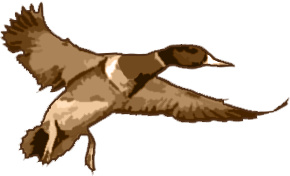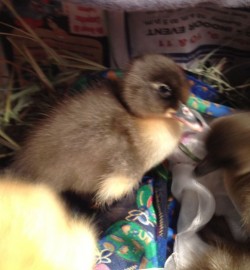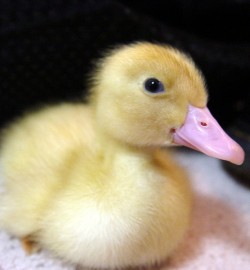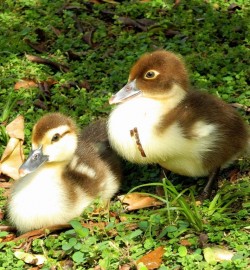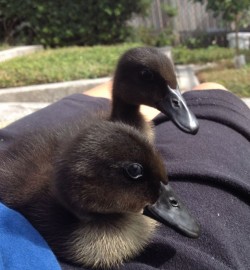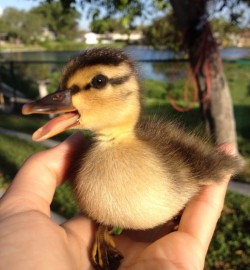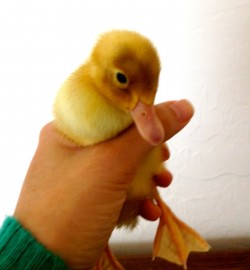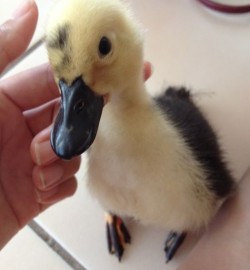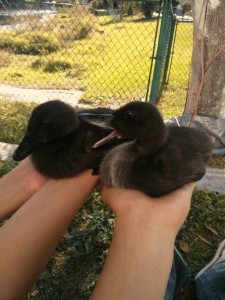
The cantonese word for duck is “op”, which was derived from the sound that a duck makes. For english speakers, we teach our kids that ducks go quack and chickens go cluck. But what is all that quacking about, really? Naturalists such as Lorenz have observed unique and distinctive calls which have different meanings – namely, a Duck Language so to speak. In Lorenz’s most popular book, King Solomon’s Ring, he describes how Mallard ducklings only follow/imprint on you when you correctly mimic the mother mallard’s signals.
Duckling voices are very different from adults duck voices. Perhaps the duckling voice has evolved over time to evoke the mother’s nurturing instincts, in the same way that a baby’s cry does for a human mother. If you’ve ever had a baby duck, you’ll find that it’s cry is hard to resist!
Runner female reassures her adoptive babies
The interesting thing about duck language is that male and females, as soon as they come of age, develop different vocal patterns. The male speech is more rapid and lower, whereas the female is higher and grumpier sounding.
Ducks feel safest in a flock because there are more pairs of eyes watching for danger. They react instinctively to each other’s minute body gestures and vocalizations. Like other social pack animals, ducks have learned to work together to survive. Don’t be surprised if your duck learns to call you, and starts waiting and pecking at your door to be fed. They will very quickly get to know your routines and how much they can get out of it.
These females were competing for the same mate. Sometimes ducks will use this same call to call you as soon as you walk away or if they want to be fed.
